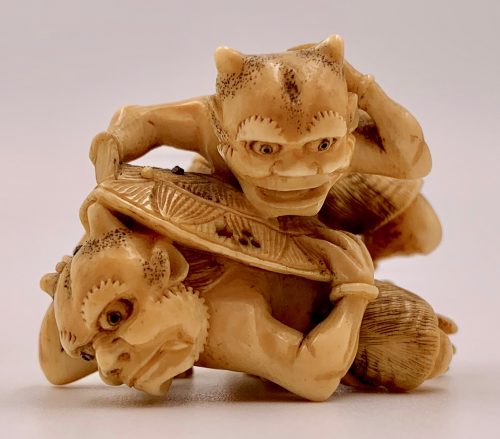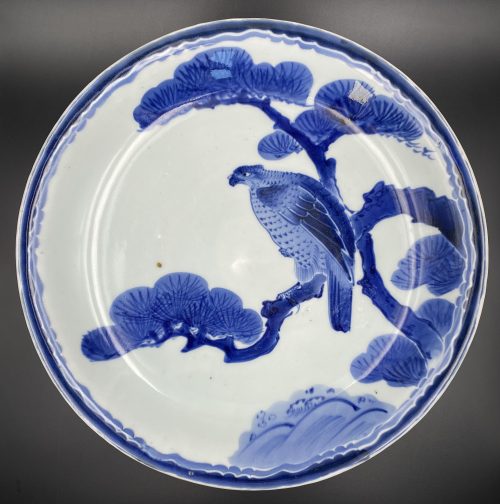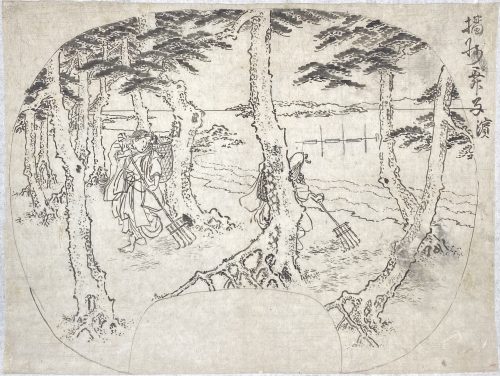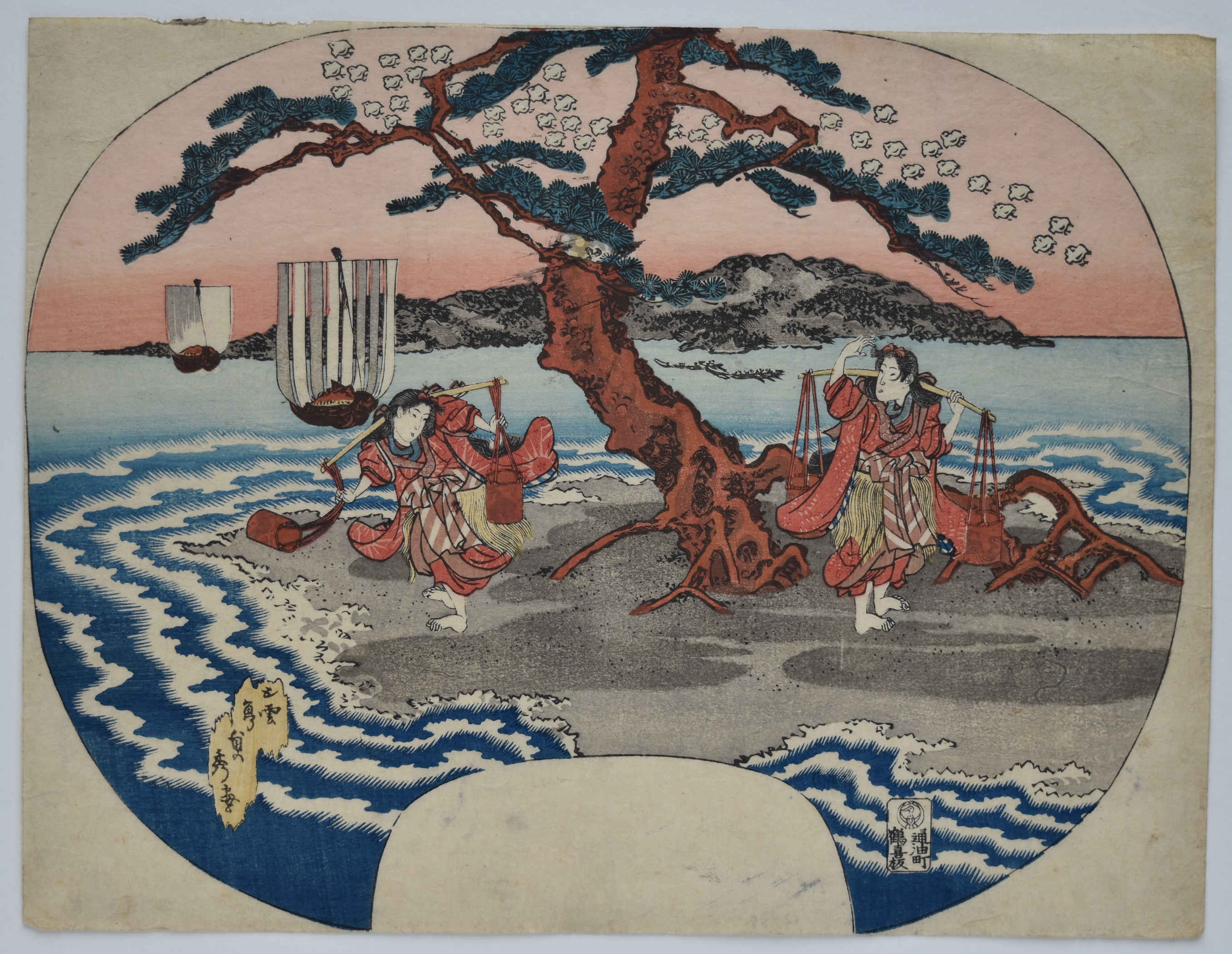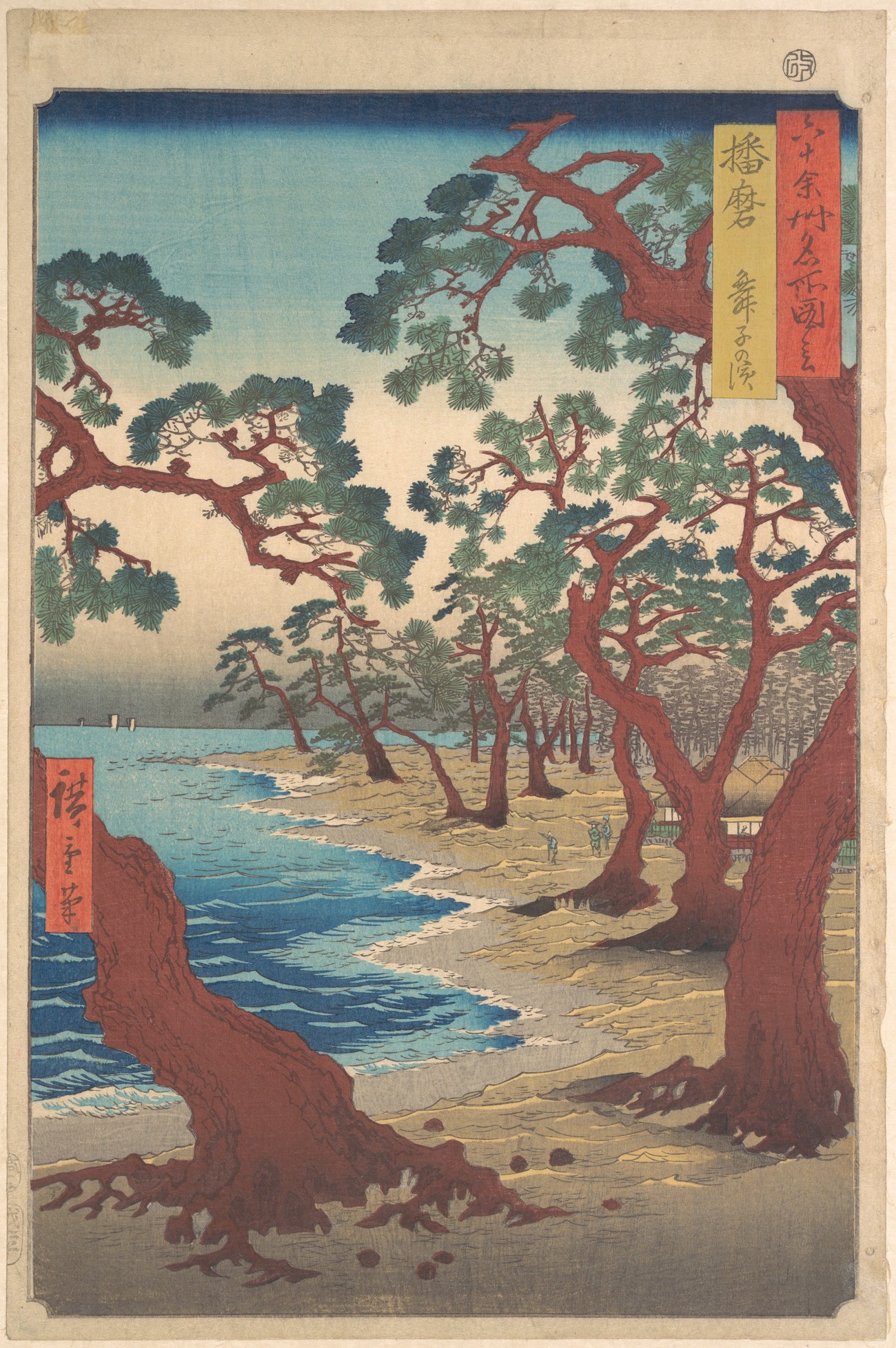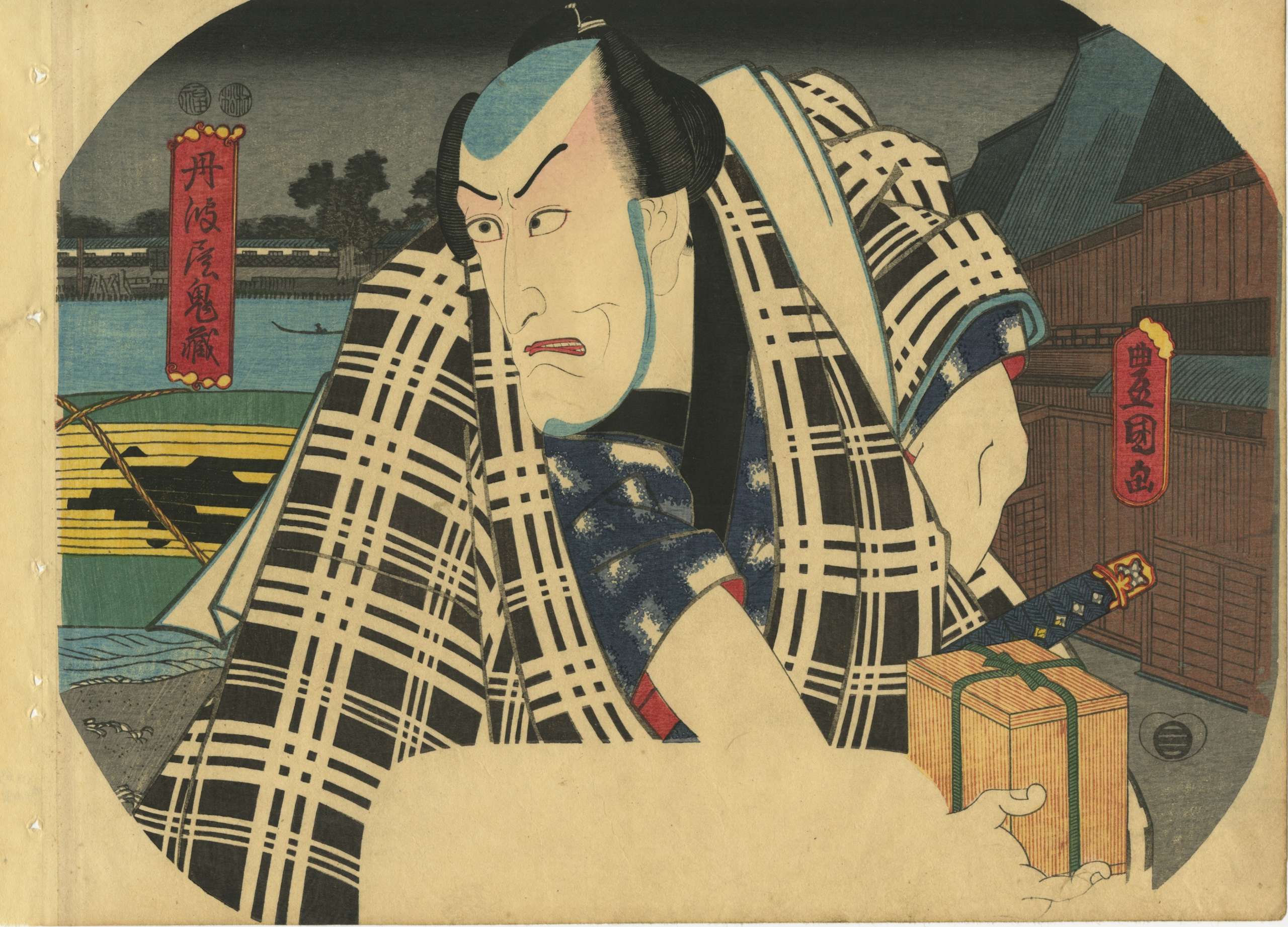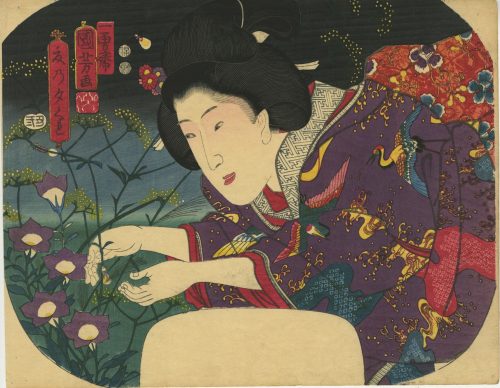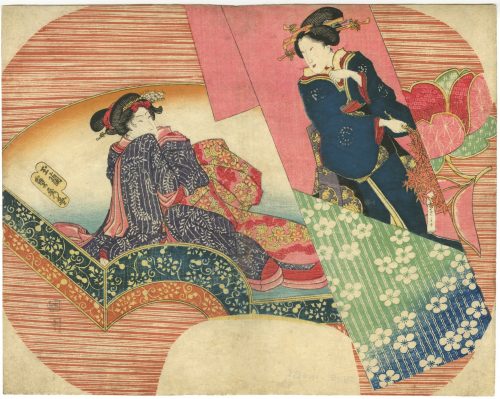Artist:
Utagawa Toyokuni I [
歌川豊国] (1769–1825).
Title: 「しなのやおこん 瀬川菊之丞」「帯屋長右衛門 嵐雛助」
Kabuki play:
Katsuragawa Renri no Shigarami [桂川連理柵]. According to
Waseda University Cultural Resource Database, the play was performed at
Ichimura-za (Edo) on the 2
nd month of Kansei 12 (year 1800) under the title 楼門五山桐 さんもんごさんのきり.
Publisher:
Nishimuraya Yohachi [西村屋与八] (Japanese, c. 1751 – 1869).,
Play by Suga Sensuke [菅専助] (ca. 1728 – 1791) in two acts. First performed at Kita Horie-za in Osaka in October 1776. Based on a real incident occurring sometime in the Kyōhō era (1716-35), this story was first dramatized in 1761. The first Kabuki drama to stem from this play was in 1777 at Osaka's Araki-za. Obiya Chōemon, a married obi merchant (
sitting with abacus) in his forties, meets his neighbour's daughter Ohan (
standing behind Obiya), who is young enough to be his daughter, at an inn in
Ishibe; the two fall in love and pledged their troth. Ohan becomes pregnant. After a series of misfortunes, the lovers rush to Katsuragawa (
Katsura River), where they drown themselves.
Segawa Kikunojō III (Japanese, 1751 – 1810); other names: Segawa Senjo, Segawa Rokō III, Segawa Tomisaburō I, Ichiyama Tomisaburō, Ichiyama Shichinosuke. The actor held the name of Segawa Kikunojō III from the 11th lunar month of 1774 to the 7th lunar month of 1801. He surpassed all the actors of his time in both female and male roles, especially in the former, and achieved tremendous public acclaim.
Arashi Hinasuke II [嵐雛助] (Japanese, c. 1774 – 1801); other names: Nakamura Jūzō III, Kanō Hidenosuke I, Arashi Hidenosuke I. The actor held the name of Arashi Hinasuke II from the 1st lunar month of 1794 to the 2nd lunar month of 1801. Hi died in Edo on the 4th day of the 2nd lunar month of 1801
.
For the same characters illustrated by Utagawa Kuniyoshi see
SVJP-0333.2021.
 Sources
Sources:
- Historical Dictionary of Japanese Traditional Theatre By Samuel L. Leiter. Second edition, 2014.
- Kabuki Encyclopedia. An English-Langauge Adaptation of Kabuki Jiten. Samuel L. Leiter. Greenwood Press, 1979.
- http://www.kabuki21.com/
- Waseda University Cultural Resource Database
































